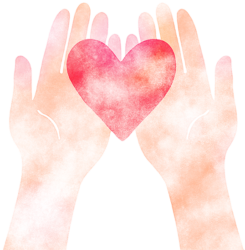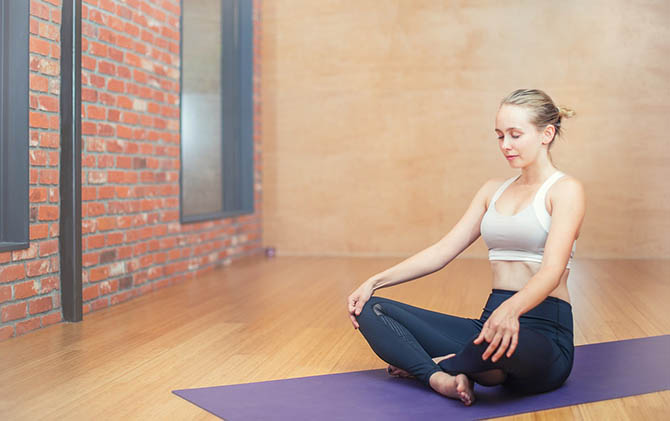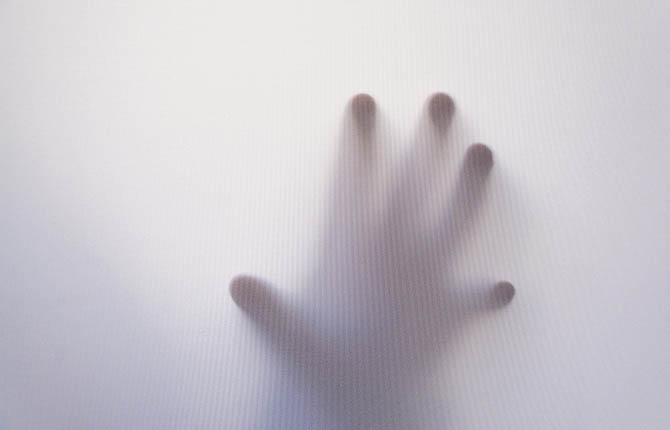Breathe Your Way to Calm
Anxiety can be a debilitating experience, leaving you feeling overwhelmed, stressed, and powerless. Whether it’s caused by work, relationships, health concerns, or any other factors, anxiety can have a serious impact on your mental and physical well-being. But what if we told you that there is a simple, yet powerful tool that you can use to help relieve your anxiety – your breath?
Breathing techniques for anxiety have been around for centuries, and science is now backing up their effectiveness. Breathwork is a form of self-care that can help you reduce stress, manage your anxiety, and improve your overall well-being. By focusing on your breath and practicing specific techniques, you can activate your body’s relaxation response, which will help calm your nervous system and reduce the physical and emotional symptoms of anxiety.
We’ll guide you through 5 anxiety breathing exercises that you can do anytime, anywhere. Whether you’re at home, at work, or out and about, these techniques will help you feel more grounded, centered, and in control. So take a deep breath, and let’s get started!
Why Are Breathing Exercises So Effective In Reducing Stress and Managing Anxiety?
The Science Behind Breathing Techniques for Anxiety
Best Breathing Techniques for Anxiety
Tips for Practicing Breathing Techniques for Anxiety
So, why are breathing exercises so effective in reducing stress and managing anxiety?
- Managing stress response: Breathwork is a powerful tool for managing anxiety because it taps into the mind-body connection. When we’re anxious or stressed, our bodies go into “fight or flight” mode – our heart rate increases, our breathing becomes shallow and rapid, and our muscles tense up. By focusing on our breath and slowing down our breathing, we can send a signal to our bodies that we’re safe and in control. This activates the “rest and digest” response, which slows down our heart rate, lowers our blood pressure, and relaxes our muscles.
- Gaining perspective: Anxiety breathing exercises also help us become more aware of our thoughts and emotions, making them an effective stress management technique. When we’re anxious, our thoughts and worries can spiral out of control, and we can feel like we’re stuck in a cycle of negativity. By focusing on our breath, we ground ourselves in the present moment and interrupt those thought patterns. This can help us gain perspective, reduce anxiety, and feel more empowered to take on the challenges we’re facing.
The Science Behind Breathing Techniques for Anxiety
The way we breathe has a direct impact on our mental and physical health, and our breathing patterns can significantly affect our anxiety levels. When we’re feeling anxious, our breathing changes, becoming shallow and rapid. This type of breathing stimulates the sympathetic nervous system, causing the body to release adrenaline and cortisol – the stress hormones. As a result, we can feel even more anxious, which further fuels the cycle of stress and anxiety.
Breathing techniques for anxiety work by interrupting this cycle and promoting relaxation. By consciously slowing down our breathing, we can activate the parasympathetic nervous system, which is responsible for the relaxation response. This can help lower our stress levels, calm our thoughts, and reduce anxiety.
Plethora of research supports the effectiveness of deep breathing techniques in reducing symptoms of anxiety and depression, improving attention and cognitive performance.
By incorporating deep breathing techniques into our daily routine, we can activate the relaxation response and lower our stress levels, leading to improved mental and physical health.
Best Breathing Techniques for Anxiety
Diaphragmatic Breathing
Diaphragmatic breathing, also known as deep breathing or belly breathing, is a simple technique for anxiety relief and stress management. It’s the way babies breathe naturally, but as we grow older, we tend to forget this pattern and shift to shallower chest breathing.
This technique involves breathing deeply into your diaphragm, the muscle located just below your lungs. As you inhale, your belly expands and your diaphragm contracts and moves downward, creating space in the chest cavity and allowing the lungs to fill with air. This type of breathing helps slow down the breath, increase the amount of oxygen in the body, and activate the relaxation response. Practicing diaphragmatic breathing can help calm the nervous system, leading to reduced feelings of anxiety. As a bonus, diaphragmatic breathing can also help improve lung function and lower blood pressure.
While belly breathing is a natural pattern, it’s still helpful to set aside time for focused practice. Practicing for a few minutes every day can help make it a habit, so you naturally shift to diaphragmatic breathing during the day when you’re feeling anxious. With regular practice, diaphragmatic breathing can become a natural and effective way to manage anxiety and stress.
How to practice diaphragmatic breathing
- Lie down or sit in a comfortable position.
- Place one hand on your chest and the other hand on your belly.
- Breathe in deeply through your nose, focusing on filling your diaphragm. Remember to breathe deeply into your abdomen, so that your belly rises as you inhale and falls as you exhale.
- Exhale slowly through your mouth, focusing on relaxing your diaphragm. Try to exhale for a longer time than you inhale, if possible.
- Repeat this process several times, focusing on each breath. You can practice this technique for a few minutes at a time, several times a day, or whenever you feel anxious or stressed.
4-7-8 Breathing for Anxiety Self-Help
The 4-7-8 breathing is another accessible and efficient calming breathing technique that’s known to promote relaxation, reduce stress, relieve anxiety and even help with sleep. Developed by Dr. Andrew Weil, a physician and holistic health practitioner, this stress management technique is based on the ancient Indian practice of pranayama. It involves inhaling for a count of 4, holding the breath for a count of 7, and exhaling for a count of 8. By taking slow, deep breaths in a specific pattern, you can calm your nervous system and slow down your heart rate.
This breathing pattern helps slow down your heart rate, calm your nervous system, and promote relaxation. It’s a great way to manage stress and anxiety, and it only takes a few minutes to practice each day. With regular practice, the 4-7-8 breathwork can become a valuable tool in managing stress and anxiety.
The 4-7-8 technique is easy to do and can be practiced anywhere, at any time. It’s particularly useful when you’re feeling overwhelmed or anxious and need a quick and effective way to calm down. The 4-7-8 exercise can also be used as a form of meditation, helping you to focus your attention and calm your mind.
Many people also find that practicing the 4-7-8 technique before bed helps them fall asleep more easily, so they use it as a natural way to promote restful sleep.
How to practice the 4-7-8 technique for stress and anxiety relief:
- Find a quiet place where you can sit comfortably, with your back straight and your feet flat on the floor.
- Place your tongue behind your upper front teeth, with the tip resting against the ridge of tissue just behind your upper front teeth. Keep your tongue in this position throughout the exercise.
- Take a deep breath in through your nose, counting to 4 as you inhale. As you inhale, try to fill your lungs from the bottom up, so that your belly expands first, then your chest.
- Hold your breath for a count of 7.
- Exhale slowly through your mouth, counting to 8. As you exhale, try to completely empty your lungs and let go of any tension or stress you’re holding onto.
- Repeat this process 3-4 times, or until you feel calm and relaxed.

Box Breathing: A Simple Way to Relax and Focus
Box breathing, also known as square breathing or four-part breathing, is a relaxation technique that involves taking slow, deep breaths in a specific pattern. This technique is often used by athletes, military personnel, and first responders to help them stay calm and focused in high-pressure situations. However, anyone can benefit from this breathing exercise, as it is a simple and effective way to reduce stress and anxiety, and improve concentration and focus.
The idea behind box breathing is to regulate your breathing by taking four equal counts of inhaling, holding your breath, exhaling, and holding again, which can be visualized as the four sides of a box. This breathing pattern creates a calming effect on your nervous system, slows down your heart rate, and helps you feel more centered and relaxed.
Box breathing is easy to do and can be practiced anywhere, at any time. You don’t need any special equipment or training. With regular practice, you can use this technique to help you stay calm and centered in any situation, manage stress and reduce anxiety, improve mental clarity, and enjoy the benefits of a more relaxed and focused mind.
How to practice box breathing for anxiety relief:
- If possible, find a comfortable position seated or lying position. (Note: In emergency situations, any position that allows you to breathe safely is appropriate.)
- Close your eyes and inhale slowly through your nose to a count of four, filling your lungs with air. Each count can be one second or longer.
- Hold your breath for a count of four.
- Then exhale slowly through your mouth to a count of four.
- Finally, hold your breath again for a count of four before repeating the cycle.
- Repeat this breathing pattern for a few minutes, or until you feel more relaxed and focused. If you’re feeling stressed or anxious, you can practice box breathing for a longer period of time to help you calm down and regain your composure.
And here is a video guidance for you:
Alternate Nostril Breathing to Relieve Stress and Anxiety
Alternate Nostril Breathing, also known as Nadi Shodhana, is a popular breathing technique that helps to calm the mind, reduce stress and anxiety, and promote overall relaxation. This technique is based on the ancient Indian practice of pranayama, or yogic breathing, that involves alternating the flow of breath between the right and left nostrils. This type of breathing can help balance the nervous system and promote a sense of calm, which can be helpful in reducing feelings of anxiety.
Alternate Nostril Breathing has been shown to have a variety of benefits, from improving cardiovascular function to boosting cognitive health. It is a great way to relieve stress, as well as improve focus and concentration. Studies have found that regular practice of alternate nostril breathing can help lower blood pressure and heart rates, improve lung function, and enhance cognitive abilities like memory and motor skills. Plus, it’s easy to do and can be done just about anywhere, whenever you’re feeling overwhelmed or anxious and need a quick and effective way to calm down. Give it a try and see how it can help you feel more relaxed, focused, and energized.
How to practice alternate nostril breathing for anxiety relief:
- Find a quiet place where you can sit comfortably, with your back straight and your feet flat on the floor. You can sit in a chair or on the floor, whichever is more comfortable for you.
- Bring your right hand to your face and let your index and middle fingers rest between your eyebrows. Use your right thumb to gently close your right nostril.
- Exhale fully and slowly through your left nostril.
- Inhale gently and deeply through the same left nostril.
- At the top of your inhale, close your left nostril with your ring finger so that both nostrils are closed. Pause and hold your breath for a moment.
- Then release your right thumb and exhale slowly and completely through your right nostril. Pause here for a moment.
- Gently inhale through your right nostril. At the top of your inhale, close your right nostril with your right thumb, and pause.
- Exhale fully through your left nostril.
- This completes one cycle of alternate nostril breathing.
- Continue to alternate between nostrils for several rounds, focusing on the sensation of the breath and keeping the inhales and exhales gentle and relaxed.
- When you’re finished, take a few moments to sit quietly and observe how you feel. You may notice a sense of calm and relaxation throughout your body and mind.
Remember, as with any breathing technique, take your time and don’t push yourself too hard. Start with a few rounds of the technique and gradually work your way up to more rounds as you become more comfortable with the exercise.
Straw Breathing: A Simple Technique for Anxiety Relief
Straw or pursed-lips breathing is a breathing technique that involves inhaling through the nose and exhaling through pursed lips, as if you were blowing through a straw. By doing so, you increase the pressure in your airways and slow down your breathing, which can help calm your nervous system and reduce feelings of anxiety and stress.
Straw breathing is an excellent technique for those who may be experiencing shortness of breath or anxiety-related symptoms such as hyperventilation. It is also easy to perform, can be done anywhere, at any time, and is a great tool for managing feelings of anxiety in the moment. It’s also a good way to incorporate deep breathing into your daily routine, as it only takes a few minutes to practice.
Here’s how to practice straw or pursed-lips breathing:
- Find a comfortable seated position and relax your shoulders.
- Take a deep breath in through your nose, filling your lungs with air.
- Pucker your lips as if you were going to whistle or blow out a candle and exhale slowly and steadily through your pursed lips, as if you were blowing through a straw. Focus on making the exhale longer than the inhale. As you exhale, imagine that you are letting go of any tension or stress in your body.
- Repeat this breathing pattern for a few minutes, or until you feel more relaxed and focused. Focus on the slow, steady flow of air through your lips.
Tips for Practicing Breathing Techniques for Anxiety
- One size does not fit all: Different breathing techniques work for different people, and it’s important to find the technique that works best for you. Some people find alternate nostril breathing to be particularly helpful in reducing feelings of anxiety, while others prefer 4-7-8 breathing or box breathing.
- Make it a habit: Incorporate breathing techniques into your daily routine, whether it’s taking a few deep breaths before getting out of bed or practicing a breathing exercise during a break at work. By making it a habit, you can manage your anxiety on a regular basis. The more you practice, the more effective the techniques will be in managing your anxiety.
- Use guided breathing exercises: Using audio-guided breathing exercises can help you focus and ensure that you’re practicing the techniques correctly. Consider trying out a mobile app like Myselfland, which offers a variety of guided breathing exercises and mindfulness practices to help reduce anxiety and stress.
- Breath of fresh air: Some people find that practicing breathing techniques outdoors can be especially helpful in reducing feelings of anxiety. The combination of fresh air and natural surroundings can help promote a sense of peace and calm.
By learning and practicing anxiety breathing techniques, you can harness the natural power of your breath to reduce feelings of anxiety and stress.

Is it safe?
It is generally considered safe for most people to practice controlled breathing techniques as a way to manage symptoms of anxiety. However, it’s important to keep in mind that they may not be suitable for everyone, and there are some situations where it is not recommended.
If you have any medical conditions that affect your breathing, such as asthma or chronic obstructive pulmonary disease (COPD), it is important to talk to your healthcare provider before starting any breathing exercises. This is especially important if you experience any chest pain, shortness of breath, or dizziness while practicing breathing exercises. It’s always better to be safe than sorry!
While controlled breathing techniques can be effective, they can sometimes worsen symptoms of anxiety. For example, some people may experience feelings of lightheadedness, dizziness, or panic when they focus too much on their breathing or hold their breath for too long. Additionally, some people may have a phobia or trauma related to breathing, which can be triggered by controlled breathing techniques. In these cases, controlled breathing techniques may worsen anxiety symptoms rather than alleviate them.
It’s important to listen to your body and not push yourself beyond your limits. If you feel unwell or uncomfortable during any breathing exercise, it’s always okay to stop and take a break. Remember, what works for someone else may not work for you, so it’s essential to try different techniques and approaches to see what works best for you.
Is It Enough?
When it comes to coping with anxiety, controlled breathing techniques can be a real lifesaver. They can effectively help to manage the body’s stress response in the moment. However, it’s important to remember that breathing techniques alone won’t address the underlying emotions causing your anxiety. If you want to achieve long-term relief, you’ll need to explore and address the root causes of your anxiety.
That being said, breathing techniques can still be a helpful addition to a broader approach to managing anxiety, such as therapy or self-reflection. And if you’re looking for some extra guidance and support, check out the Myselfland mobile app. It’s packed with insightful audio guides that offer practical strategies and tools for dealing with anxiety. Give it a try and see how it can help you on your journey towards better mental health. And remember, it’s always important to seek professional medical treatment if you’re struggling with severe anxiety or other mental health conditions.

Controlled Breathing for Anxiety and Stress
Our bodies are equipped with innate self-regulatory mechanisms, with breathing being one of the most powerful. By exploring and using this body’s superpower, we can learn to manage anxiety in a simple and holistic way. The power of breath lies in its ability to regulate our nervous system, calm our minds, and promote a sense of inner peace. By incorporating breathing exercises into our daily routine, we can tap into this natural source of self-regulation and connect with our bodies in a meaningful way.
The breathing techniques that we discussed can be practiced on their own, or in combination with other techniques, such as mindfulness or progressive muscle relaxation.
Practicing controlled breathing techniques can take time to develop and it’s important not to push yourself too hard. It’s okay if you don’t get it right the first time, or if you have difficulty concentrating. Just keep practicing and be kind to yourself along the way. The more we practice, the more we develop our innate coping skills. So take a deep breath, connect with your body, and explore the incredible power of your breath.






